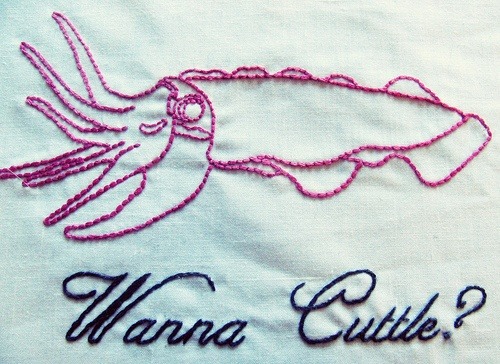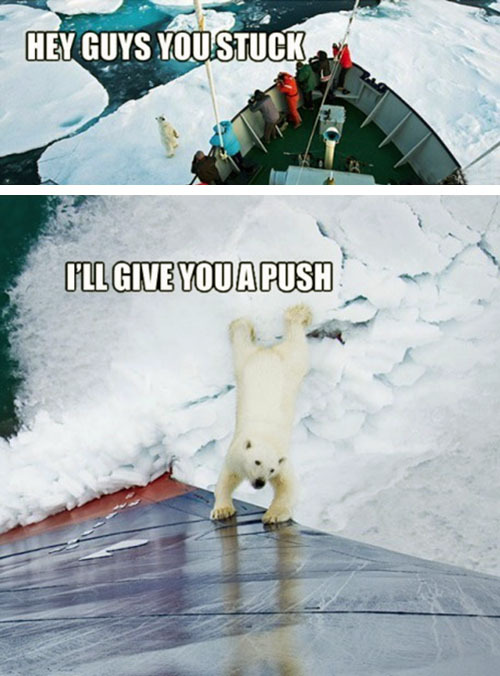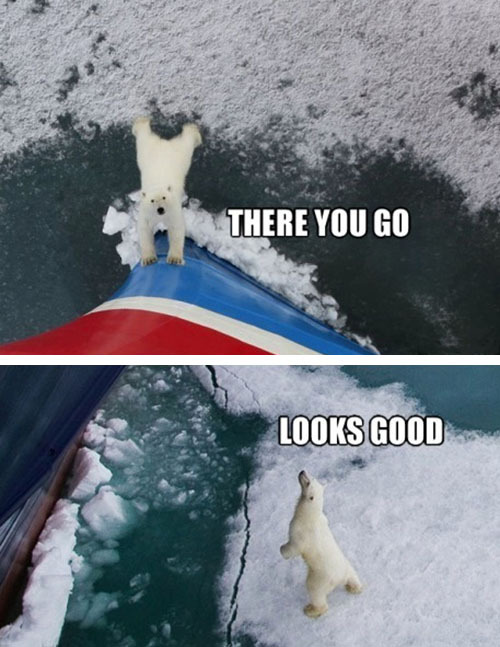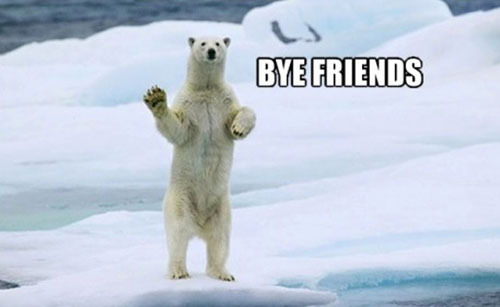Shared posts
Ink & Mirrors: A Cuttlefish Comic
It's part of a Research Topic called CephsInAction: Towards Future Challenges for Cephalopod Science, so at some point it will be published with all the other contributions in an e-book. In the meantime, I've got editorial clearance to post all four pages of the comic here for your edification and enjoyment!
With grateful acknowledgement to editor Tarla Rai Peterson and reviewers Gil Penha-Lopes and Alexandra Nobre, I give you INK & MIRRORS. (The image is a link.)
montereybayaquarium: An Ancient Fascination Octopuses and their...
MelodyarossI am going to the mainland this summer for literally no other reason that to go to this exhibit.
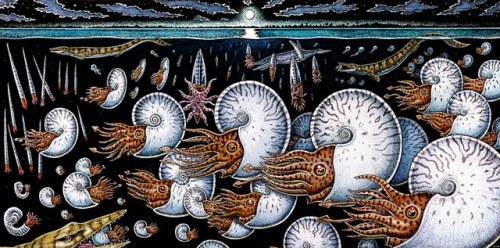
"Night of the Ammonites", or A moonlit night somewhere near the town of Kremmling, Colorado, seventy-three million years ago, Ray Troll, pen, ink and watercolor, 1998
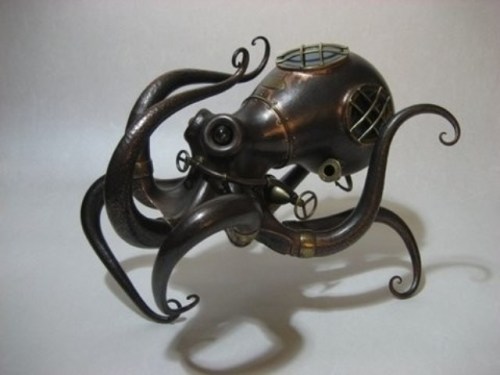
Top Heavy “Sora”, Nozomu Shibata with Kenta Chujo, raised copper and brass with glass, 2013
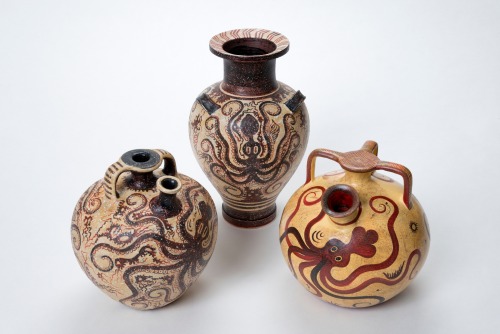
Minoan pottery, Crete, 9th to 16th century BC (facsimiles)

"Gamochonia", Scientific illustration by Ernst Haeckel, Art Forms in Nature, 1899–1904

"Contessa with Squid", Omar Rayyan, oil on panel, 2011
An Ancient Fascination
Octopuses and their kin, sea creatures known collectively as cephalopods, have grabbed hold of our collective imagination for thousands of years.
We share this fascination as manifested in art, literature and contemporary culture in “Tentacles: The Astounding Lives of Octopuses, Squid and Cuttlefishes.” Highlights include:
- A steampunk-style sculpture made from raised copper and brass with glass in the Japanese technique called “Tankin.”
- Ancient Minoan pottery replicas painted with cephalopod designs.
- An illustration from Jules Verne’s Twenty Thousand Leagues Under the Sea.
- A drawing of octopuses attacking a fleet of ships, depicted as fact by a French naturalist in 1803.
- A highly detailed drawing of cephalopods by famed naturalist Ernst Haeckel.
- Glass models of squid and octopuses by father-son team of Leopold and Rudolph Blaschka.
- A replica of the famous abstract work, The Birth of the Cephalopods, by Mark Rothko.
- A dramatic depiction of a sea of ammonites 73 million years ago.
- The intriguing yet slightly disturbing image of Contessa with Squid by Omar Rayyan.
- Cephalopod tattoo art.
We also commissioned San Francisco Bay Area artist Nemo Gould to create three kinetic sculptures for “Tentacles” using found objects. Gould has transformed a jumble of junk into delightful dioramas that carry conservation messages delivered through a sense of wonderment.
“Tentacles" opens April 12.
Calamari Steaks vs. Rings: The life and times of California's squids
 |
| Embryos in a Humboldt squid egg mass. Credit: Steven Haddock |
| Author with Petri dishes at microscope. Credit: Ashley Booth |
| Author jigging for Humboldt squid. Credit: Ashley Booth |
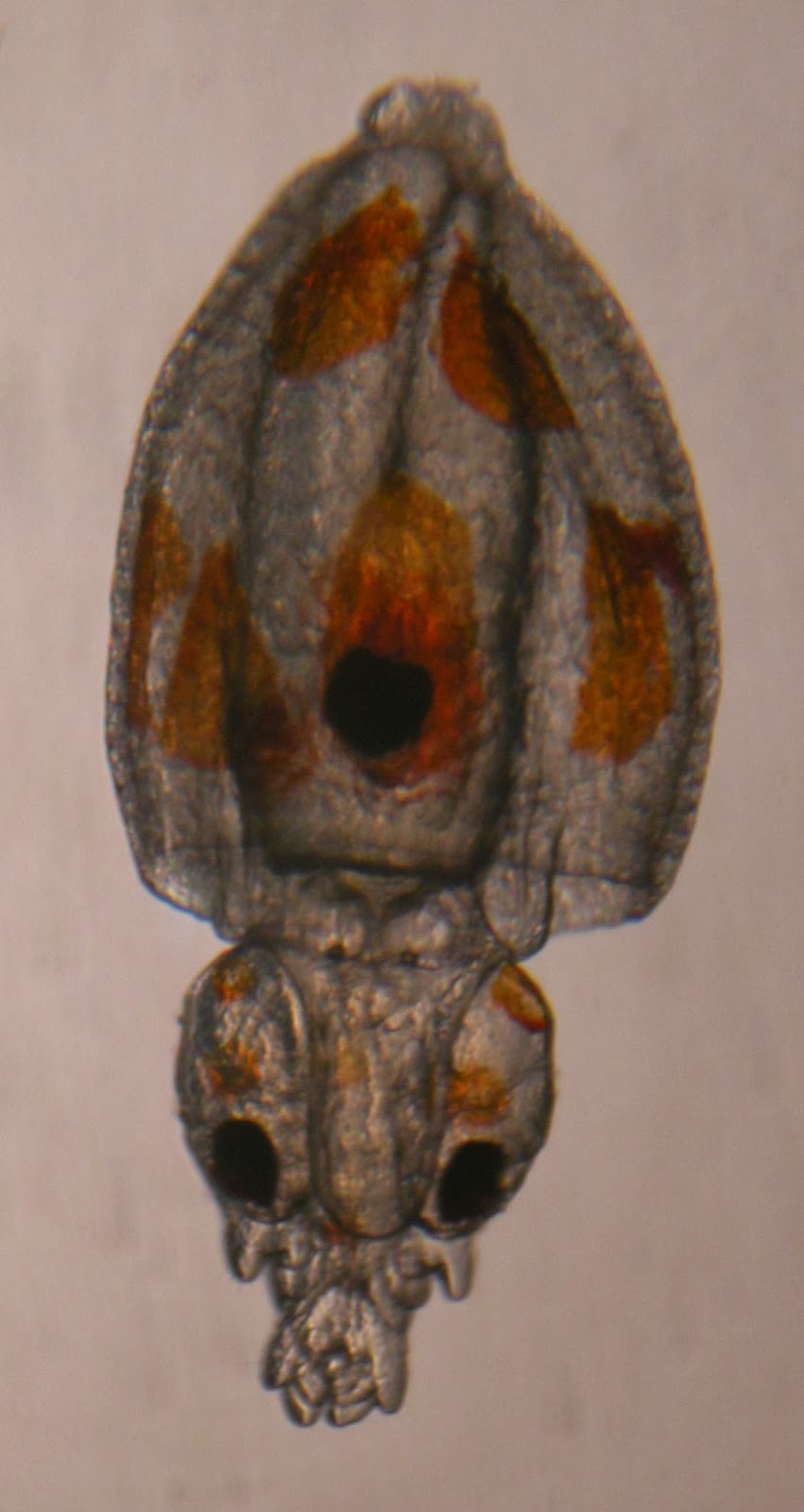 |
| Baby Humboldt squid. Credit: Danna Staaf |
My teenaged daughter has recently started a webcomic. Could you give her one piece of advice that has helped you and one piece of advice that absolutely has not? Please indicate which is which. Thanks!
MelodyarossMetaphor.
Good advice: Make your comics and put them online, then make more then keep doing that without stopping for at least 2 or 3 years before you expect ANYTHING in terms of recognition or readership.
This accomplishes several things. 1) It keeps you from viewing your work as precious. Don’t obsess over one piece, draw and redraw, correct and perfect it all while never posting it. You get better by making MORE comics. Not by making the same comic over and over. 2) It gets you accustomed to the cycle of creativity. Have an idea, refine it, make it, put it up, repeat. 3) It gets you accustomed to taking and responding to feedback and criticism. The more work you post the more readers you’ll get and the more opinions you will start to receive directly or indirectly about your work.
More good advice: ALWAYS ALWAYS ALWAYS ALWAYS be kind. Be kind online, be kind in person, be kind to your readers, be kind to your fellow artists, be kind to the world. This is important above all else because 1)Being an online persona means YOU are the product you are selling. If your product is a total dickbag, the only people who buy it will be total dickbag enthusiasts. 10 years down the road and you realize all of your readers are assholes and you’ve hand picked them because of how you acted. 2) Your peers talk about you when you aren’t around. They decide who to work with on collaborations, who to bring in on new opportunities and who share hotels/booths/wonderful experiences with at conventions. Word will get around SO VERY FAST if you are not a nice person and you will start to wonder why fun projects keep passing you by. 3) Can anyone honestly come up with a reason to NOT always be kind? When looking for a default behavior, you can’t do much better than this.
Even More good advice (lightning round): Don’t worry about merch. Worry about making good comics. Dont worry about getting more readers. Worry about making good comics. Don’t EVER compare your perceived success to that of your peers. You don’t know their situation, or how they came about what you think they have that you might want for yourself. Just worry about making good comics. Never envy your peers money, readers or success (sounds a lot like the last one right? That’s because it’s super important.) Instead, envy how hard they’ve worked and try to emulate that. Also, just worry about making good comics. Don’t try to find success by doing exactly what another artists has done. We all have different paths to success and you’ll do better finding your own rather than copying someone else (in art as well as in business). Also just worry about making good comics.
The worst piece of advice I ever got: Get an invitation to the cool kids table, i.e. Get in with this certain clique and you’ll be instantly welcomed into the secret world of webcomic success. This secret club, community, group, whatever you want to call it DOES NOT EXIST. I spent too many years waiting for artists I admired to take notice of me that I eventually started to obsess over making them like me. Spoilers, it never happened and I had nothing to show for all that worry and grief. I gave absolute strangers power over my mental well being that they didn’t even want and certainly didn’t deserve. Don’t worry about making “powerful” friends. You will make more friends in this industry by BEING a good friend first. Offer help, offer support, share your audience with artists whose work you admire. Be honest, be genuine and be kind. Repeat that 1000X in your head every day until it’s the only thing you even understand anymore.
By the way, the person who gave me that terrible advice was me.
Talk To Us
And to defecate?
No. For that he has another opening, between his lower arms. Drypeds defecate in private, shut inside their dens, and do not talk about it.
Weird. The females do use their siphons to mate, though, right?
No, never. They have yet another opening for mating, also between the lower arms, but separate from the one for defecation. Mating is done in private as well, although they talk about it a little more.
Why do they need so many openings?
Let me finish, Speckled. I said there were two openings on the dryped's head. The second one, below his siphon, is a mouth.
What! Their mouth isn't hidden between their arms?
No, because they use it to talk.
They use their mouth to talk?
Yes.
That's really gross. Then do they also . . . eat . . . in public?
It is one of the most common things for drypeds to do. They are constantly going to one another's dens in order to eat together, and going out to special dens for the purpose of eating together.
Ugh. I'm glad they're leaving.
That is not a wise thing to be glad of.
Vella Pachik was eighty-three years old when she refused to evacuate Earth. If she played by the average human lifespan, she could expect another twenty years; with her genetics and lifestyle, it was more likely to be forty. She had a daughter on Mars and a son on the Moon, a grandson and a great-grandchild on Europa, and a granddaughter and two more great-grandchildren on Brahe. Her first husband had died in a Lunar mining accident that Vella had barely escaped. Her second husband's final research flight to Earth had gone down somewhere over the Pacific Ocean.
"Dr. Pachik," said the bureaucrat, in a tone of carefully mingled respect and authority. "You must be aware that the loss of the Calypso thirty years ago has been investigated by the SU in the most thorough manner. It is not possible that your husband is still alive."
"Why are you talking to me about my personal history?" inquired Vella, matching him for authority and dropping the respect. "We're discussing Legacy's plan to retain an Earth presence."
The bureaucrat fumbled. "I, ah, our psychologist has analyzed the profiles of your group, Dr. Pachik. The variety of probable individual motivations for wishing to defy Evacuation are quite, ah, understandable. But the people have spoken; SU favors full removal; exceptions cannot be made."
Vella leaned close, invading the man's personal space until she could count the drops of sweat on his upper lip. Sea levels were high, the ice caps long gone, and it was hot and humid in the Berlin coastal rocket base. Vella was glad that the land had been reclaimed by the ocean, that the talktopus were busily exploring the ruins of Los Angeles, Buenos Aires, and Venice. What she wasn't happy about was humanity's determination to cut contact and leave them to it.
"Our personal motivations are none of your business," she said. "Your business is to address Legacy's objections and proposal, as presented repeatedly to the SU, and just as often ignored."
She tapped on the wall of text beside them. These arguments had been posted and re-posted for years, ever since the SU began to debate Evacuation. But here, at Legacy's live-streamed last stand, she decided to say it all again. For clarity. And for drama.
"We, the members and supporters of Legacy, are in agreement with the official proclamation released by the Solar Union that Dictopus sapiens, commonly known as the talktopus, is fully sentient and conscious, with the same capabilities of language, tool use, artistic expression, and morality possessed by humans.
"However, Legacy finds the the subsequent assertion that D. sapiens 'merits the opportunity to grow and develop independent and free of outside influence' sadly lacking in scientific or historic understanding. Neither Homo sapiens nor any other species has ever developed free of outside influence, nor indeed would it be possible to do so. Legacy refuses to acquiesce to the totalitarian demand, based on this fallacious reasoning, that humans quit the planet Earth and leave it to the dominion of D. sapiens."
It had been hard for Vella to understand how most humans--including her own children--could support Evacuation. Then again, most humans--including her own children--had never been to their planet of origin and didn't much care what happened to it. Surprisingly, it was the Extra-Solars (or, as they were commonly called, the Excess) who had dug in their heels. "We chose our exile from Earth," wrote Vella's granddaughter. "We know what it's like, and it shouldn't be forced on anyone. Certainly not on everyone."
But Excess support for Legacy didn't translate into physical bodies on the ground. Only a handful of Legacy Solars, like Vella, were already on Earth, or could fly there in time to join the protest. So it was necessary to make as much of a fuss--a noble, peaceful fuss--as possible. Fortunately, the media were eating it up. Their aims were the same as Legacy's: a high-profile story and lots of views.
"The reasons for Legacy's position are threefold," Vella explained. "First, we reject the paternalistic assumption that humans know what is best for another sentient species. Second, we seek the understanding that may be gained from continuous contact with our only known fellow sentient in the universe. Third, we argue that SU cannot enforce Evacuation without violating its own charter, which makes explicit the human right to free movement, migration, and residence in habitable regions, barring only public health concerns--which are manifestly absent in this case."
Vella closed with a sweeping gesture around the planet, and turned back to the bureaucrat. Caught up in her own rhetoric, she almost expected him to be smiling and clapping.
Instead, his arms were folded, and he looked weary. "The last shuttle leaves in the morning, and it's my job to make sure every human on Earth is on that shuttle."
Vella narrowed her eyes and folded her own arms. Dusk fell as they played a game older than Homo sapiens--the staring contest.
To read the rest of "Talk To Us," as well as eleven other marvelous octopus-themed tales, find Suction Cup Dreams at Amazon or Eskimo/Lapin.
How to Actually be Successful in Achieving Your 2014 Goals
Change is hard. You’ve probably noticed that.
We all want to become better people—stronger and healthier, more creative and more skilled, a better friend or family member. But even if we get really inspired and start doing things better, it’s tough to actually stick to new behaviors. It’s more likely that this time next year you’ll be doing the same thing than performing a new habit with ease. Why is that? And is there anything you can do to make change easier?
Identity-Based Habits
The key to building lasting habits is focusing on creating a new identity first. Your current behaviors are simply a reflection of your current identity. What you do now is a mirror image of the type of person you believe that you are (either consciously or subconsciously).
To change your behavior for good, you need to start believing new things about yourself.
Imagine how we typically set goals. We might start by saying “I want to lose weight” or “I want to get stronger.” If you’re lucky, someone might say, “That’s great, but you should be more specific.”
So then you say, “I want to lose 20 pounds” or “I want to squat 300 pounds.” These goals are centered around our performance or our appearance. Performance and appearance goals are great, but they aren’t the same as habits. If you’re already doing a behavior, then these types of goals can help drive you forward. But if you’re trying to start a new behavior, then I think it would be far better to start with an identity-based goal.
The image I created below shows the difference between identity-based goals and performance and appearance-based goals.

The interior of behavior change and building better habits is your identity. Each action you perform is driven by the fundamental belief that it is possible. So if you change your identity (the type of person that you believe that you are), then it’s easier to change your actions.
The reason why it’s so hard to stick to new habits is that we often try to achieve a performance or appearance-based goal without changing our identity. Most of the time we try to achieve results before proving to ourselves that we have the identity of the type of person we want to become. It should be the other way around.
The Recipe for Sustained Success
Changing your beliefs isn’t nearly as hard as you might think. There are two steps: Decide the type of person you want to be and prove it to yourself with small wins.
I cannot emphasize enough how important it is to start with incredibly small steps. The goal is not to achieve results at first; the goal is to become the type of person who can achieve those things. For example, a person who works out consistently is the type of person who can become strong. Develop the identity of someone who works out first, and then move on to performance and appearance later. Start small and trust that the results will come as you develop a new identity.
Here are five examples of how you can make this work in real life.
1. Want to lose weight?
Identity: Become the type of person who moves more every day.
Small win: Buy a pedometer. Walk 50 steps when you get home from work. Tomorrow, walk 100 steps. The day after that, 150 steps. If you do this five days per week and add 50 steps each day, then by the end of the year, you’ll be walking over 10,000 steps per day.
2. Want to become a better writer?
Identity: Become the type of person who writes 1,000 words every day.
Small win: Write one paragraph each day this week.
3. Want to become strong?
Identity: Become the type of person who never misses a workout.
Small win: Do pushups every Monday, Wednesday, and Friday.
4. Want to be a better friend?
Identity: Become the type of person who always stays in touch.
Small win: Call one friend every Saturday. If you repeat the same people every three months, you’ll stay close with 12 old friends throughout the year.
5. Want to be taken seriously at work?
Identity: Become the type of person who is always on time.
Small win: Schedule meetings with an additional 15–minute gap between them so that you can go from meeting to meeting and always show up early.
What is your identity?
In my experience, when you want to become better at something, proving your identity to yourself is far more important than getting amazing results. This is especially true at first.
If you want to get motivated and inspired, then feel free to watch a YouTube video, listen to your favorite song, and do P90X. But don’t be surprised if you burn out after a week. You can’t rely on being motivated. You have to become the type of person you want to be, and that starts with proving your new identity to yourself.
Most people (myself included) will want to become better this year. Many of us, however, will set performance and appearance-based goals in hopes that they will drive us to do things differently. If you’re looking to make a change, then I say stop worrying about results and start worrying about your identity. Become the type of person who can achieve the things you want to achieve. Build the habit now. The results can come later.
The post originally published on JamesClear.com
Shit We’re Diggin’: Love Bombing
We love the yarn bombing meets loving bombing by Aida Gomez out in Spain.
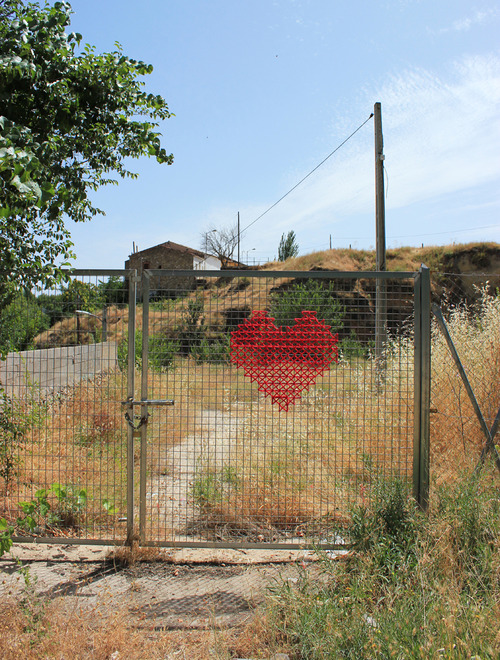
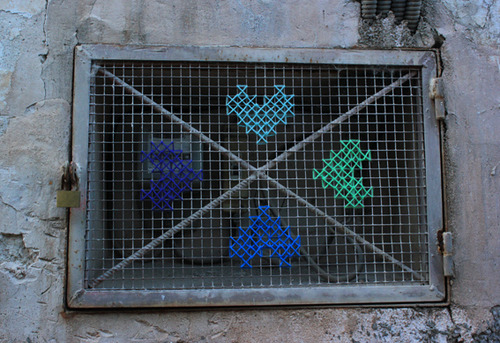
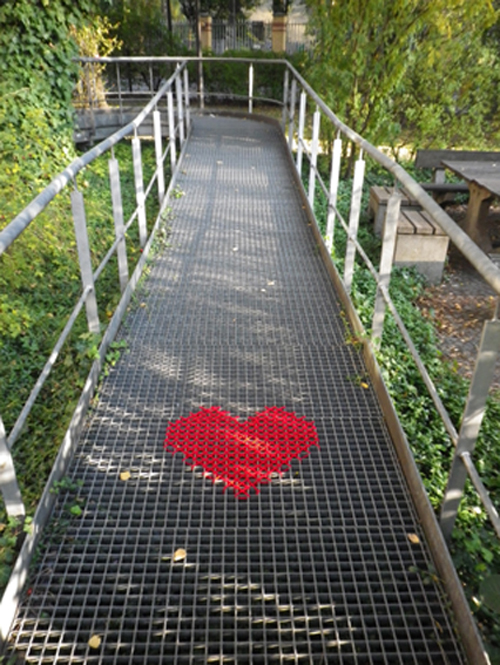


To check out more from Aida Gomez, click here.
gloriousearth: Shipwreck on the coast in Vila Nova de...

Shipwreck on the coast in Vila Nova de Milfontes, Portugal
Shipwreck on the coast in Vila Nova de Milfontes, Portugal (by Luis &;Morningrise&; Jordao).
Source: http://visitheworld.tumblr.com/post/32932196363/shipwreck-on-the-coast-in-vila-nova-de-milfontes
Yup, your dad did that first too. Sorry I’m not sorry to...
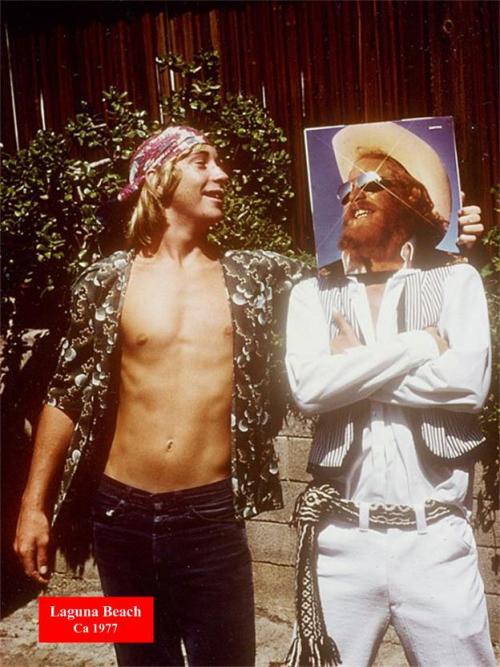
Yup, your dad did that first too. Sorry I’m not sorry to burst your bubble.
Dads are the original hipsters.
sr-y: A white shelf cloud caps brownish dirt from a dust...
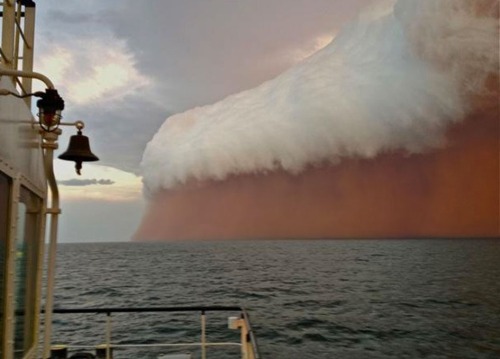
sr-y:
A white shelf cloud caps brownish dirt from a dust storm, or haboob, as it travels across the Indian Ocean near Onslow on the Western Australia coast in this handout image distributed by fishwrecked.com and taken January 9, 2013. (Reuters/Brett Martin/fishwrecked.com)
haboob
Wow.
machusonline: likeafieldmouse: Alessandro Puccinelli -...







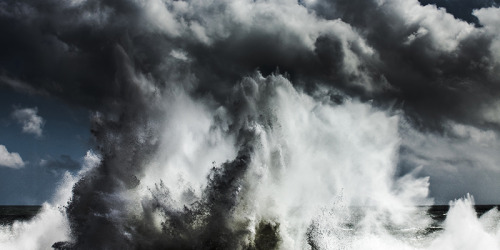


Alessandro Puccinelli - Intersections
Artist’s statement:
"Where Sea and Sky collide.
In essence, Intersections is all about that brief moment of time when the water of the sea blurs with the clouds of a stormy sky and creates a unique and abstract fleeting moment. When the fury of the ocean seems to take a breath before inexorably and inevitably starting again with the next wave.”
daily inspiration
Awesome.
Intermission: Russian Dash Cam Captures Amazing Acts of Kindness
MelodyarossThis is nice, but goddamn Russia is awful.
Almost everyone in Russia has a dashboard-mounted camera in order to protect themselves in case of an accident or emergency. In February, we saw tons of shocking dash cam footage of the meteor that fell from the sky in the town of Chelyabinsk, and disturbing footage of Russian car accidents have been prevalent on Youtube for years...
...but dash cams also capture kindness. Enjoy this heartwarming compilation of people helping each other out!
Join us for our Fix Your Street Challenge on the last Saturday of May. Click here to say you'll Do It and be sure to share stories of transportation innovation all month.

Johnny Cash's To-Do List: Kissing, Worrying, and Visiting Mama

It's not that often that you see "worry" on someone's to-do list. Usually that's more a reflex than a task. But for one of America's most prolific musicians, Johnny Cash, that ranked number eight on his to-do list for the day. This was followed by "Go See Momma," which is pretty adorable coming from a bad boy with a history of alcohol and drug abuse. In his revered Folsom Prison Blues he references Mama as well: "When I was just a baby my mama told me son, always be a good boy, don't ever play with guns."
Most of the basics are covered on Cash's to-do list, lest he forget to cough, pee, eat. These are also tasks that can be tackled relatively quickly, which is good for morale: he'll likely finish all three in less than 30 minutes. He also notes "Kiss June" as his second item of the day. Next comes "Not kiss anyone else"—the singer was known to have a wandering eye—despite declaring June Carter the love of his life, proposing to her during a live performance in front of 7,000 people in London, Ontario.
Below is Cash's list transcribed—an insight into the mind of one of the most celebrated musicians of our time. What's on your to-do list?
THINGS TO DO TODAY!
1. Not smoke
2. Kiss June
3. Not kiss anyone else
4. Cough
5. Pee
6. Eat
7. Not eat too much
8. Worry
9. Go see Mama
10. Practice Piano
NOTES: Not write notes
This post is part of the series Infamous To-Do Lists. Share what's on your to-do list here and inspire others.

Image courtesy of Julien's Auctions; Thumbnail illustration by YesFantastic
Related: 'What Good Shall I Do This Day?' Asked Benjamin Franklin Every Single Morning
Let's All Run the Boston Marathon Next Year

Just 18 people ran the first Boston Marathon 116 years ago. Nearly ten times as many were injured or killed when the country's most prestigious race was bombed Monday.
The bombs exploded just after the race's four-hour mark, before which only about 40 percent of the race's 20,000 runners could have finished the marathon. Thousands of people didn't have a chance to finish.
Even to qualify for Boston, runners need to be among the best in the world. Qualifying times are mind-blowing. Finishing the marathon is the kind of thing people list among their lifetime accomplishments.
So when I read this op-ed by Newsday's Lane Filler, I was taken aback. It's a bold commitment, because even to qualify, you have to run at least one other major marathon. It's the pinnacle of a marathoner's career, not the starting point.
But Filler is hardly alone. Boston College professor Peter Krause said, "I have never run more than five miles in my entire life," but he committed to the marathon in the campus newspaper. So did this Toronto doctor, a four-time champion, and this New York rabbi.
But for those of us—including me—who are less confident in our abilities to finish 26.2 miles in four hours, there are plenty of alternatives. 500 marathons happen worldwide every year, many of which have no qualifying requirements. Other folks have committed to attending the Boston Marathon as spectators alongside family and friends, like 500,000 people already do every year. The marathon is consistently New England's most crowded sporting event.
And if you're feeling the immediacy of this tragedy (and less than confident in your ability to run 26.2 miles ever), find a solidarity run in your city this —in Portland tonight, in D.C. on Saturday, and in Buffalo on Sunday. Some races will collect donations for rebuilding efforts, but of course it's about symbolism, like the resuming of Major League Baseball after 9/11. It's a demonstration proving that we're not scared, even though we may be.
Running is special because it's not confined to a baseball stadium or a skyscraper. We can run in every city, down every street and up every trail, with nothing but a good stretch and a pair of shoes, and this week we can do so thinking of Boston. Lace up.
Click here to add running for Boston to your GOOD "to-do" list.
Photo via (cc) Flickr user hahatango
I just got back from seeing the re-release of Jurassic Park. I remember seeing it in theaters as a...
I just got back from seeing the re-release of Jurassic Park. I remember seeing it in theaters as a kid and it was great to see it on the big screen. The 3D effects were generally very well-done.
However, what I did not like was the incredibly gratuitous and out-of-place Doritos™ product placement. I understand that Doritos sponsored the film and expected some advertising out of the deal but in my opinion it really went too far. For example:
- Every instance of food in the film has been replaced with Doritos. The park chef prepares for the group a meal of “Chilean Sea Bass flavored Doritos;” Hammond sits in the dining hall and eats piles of Doritos because “they were melting;” the rippling glass of water has been replaced with a rattling bowl of Doritos.
- Dr. Grant is no longer a paleontologist. He is now something called a “flavorologist,” and Hammond lures him to the island with the promise of an exciting new snack chip that’s “totally rad.”
- In perhaps the most egregious example, Dr. Malcolm’s iconic line, “Life finds a way,” has been replaced with “Frito-Lay has found a way… to pack even more nacho cheese flavor into every chip.”
Perhaps I am just getting older, but I feel like these changes really went against the original spirit of the film. If you agree, you may be better off waiting for the re-re-release in twenty years, on hologram or Super-DVD.
THE SHORT STRANGE DNA TRIP OF COMB JELLIES
 |
| The ctenophore Mnemiopsis leidyi. Photo by EricksonSmith at Flickr. |
At just over 10 kb, the mt-genome of M. leidyi is the smallest animal mtDNA ever reported and is among the most derived.
Ctenophores have taken this process to the extreme. Mnemiopsis has the smallest, fastest evolving, most highly modified mitochondrial genome of any animal. It has lost half of its genes, and the remaining genes are so different from those in ctenophores' closest relatives that some of them are almost unrecognizable.
Ctenophore DNA appears to be extremely fast evolving in general, which makes it difficult to place ctenophores on a phylogenetic tree. Surprisingly, it is still an open question whether the earliest animals were sponges or ctenophores, in part because the DNA of ctenophores has mutated so much that it is difficult to determine which animals are their closest relatives.
 |
| Other owners of odd mitochondrial DNA: Upper left, clockwise: box jelly (Tamoya ohboya) | Ned DeLoach via tessarazoa at Flickr; tunicates (Clavelina moluccensis) | Nhobgood at Wikimedia Commons; scyphozoan (Chrysaora colorata) | Sanjay Acharya at Wikimedia Commons; chaetognath (Chatognath spadella) | Zatelmar at Wikimedia Commons. |
However the ctenophores got their weirdness, you can see from the video below it also begat extreme beauty.
Iridescent Ctenophores from Parafilms on Vimeo.
The paper:
- Walker Pett, Joseph F. Ryan, Kevin Pang, James C. Mullikin, Mark Q. Martindale, Andreas D. Baxevanis, and Dennis V. Lavrov. Extreme Mitochondrial Evolution in the Ctenophore Mnemiopsis leidyi: Insights from mtDNA and the Nuclear Genome. Mitochondrial DNA (2011). DOI:10.3109/19401736.2011.624611
Video: tiger shark tries to snatch fisherman’s tuna
MelodyarossIf you haven't seen this yet, you need to see it.
WARNING: Brief utterance of language that some might find offensive.
YouTube user Isaac Brumaghim caught a “surprise attack” by what appears to be a tiger shark (Galeocerdo cuvier), who tried to grab the fisherman’s hooked tuna. The video was shot off of Oahu, Hawaii near Waianae on Sunday, according to a WPTV.com report. Brumaghim captured the event with a GoPro camera he had mounted on his kayak.
Intermission: Google Street View Hyperlapse Road Trip
The amazing minds at Teehan+Lax Labs manipulated Google Street View imagery to create this awesome video! Hopefully next they'll do the same thing with Google Earth...
GENTOO JUNCTION
Intermission: Meet the First Animal to Survive in Space
Tardigrades are the first animals to be able to withstand the extreme weather conditions of outer space. This has led scientists to the question: did Tardigrades actually come from outer space?


